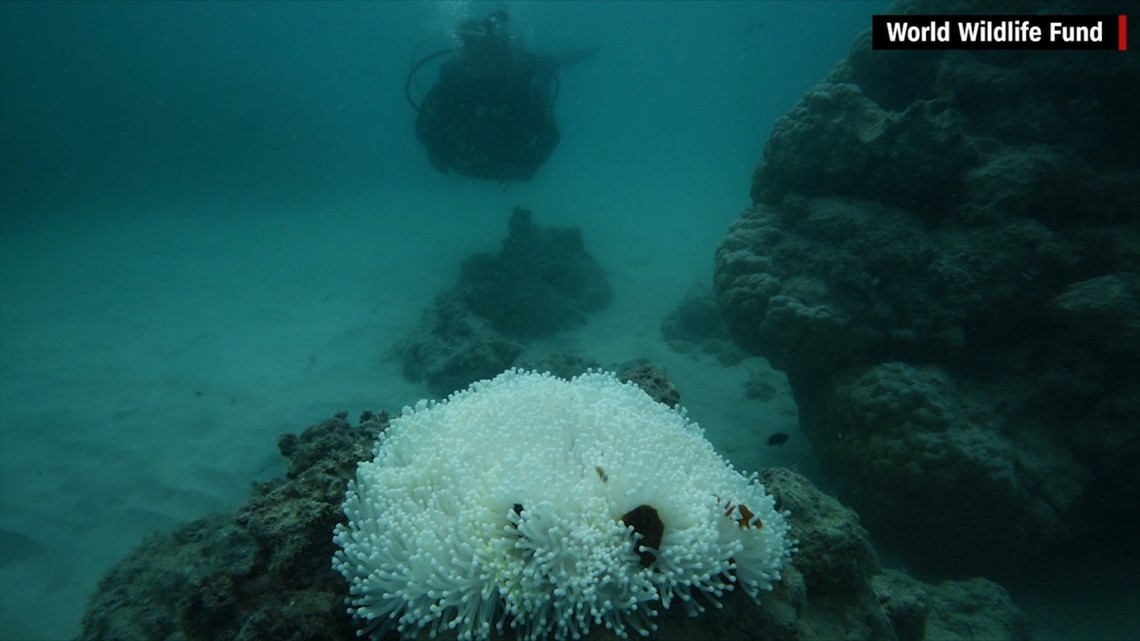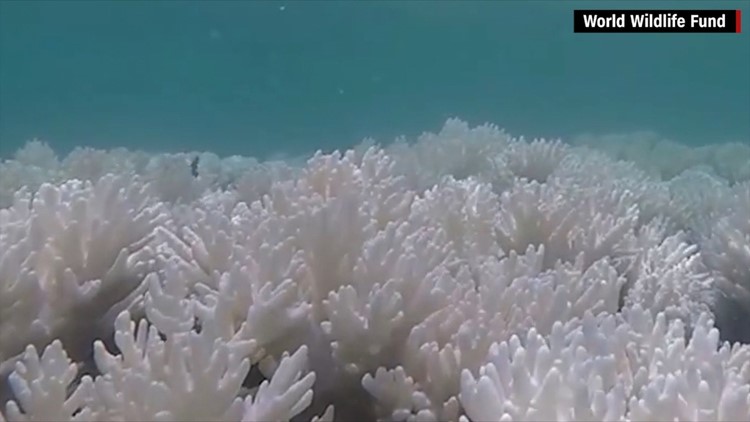(CNN) — A study measuring the extent of coral bleaching in Australia’s iconic Great Barrier Reef is branding some of the northern reef’s problem as “extreme.”
As much as 93% of the 2,300 km (1,429 miles) reef suffers from some level of bleaching, according to the report from the ARC Centre of Excellence for Coral Reef Studies. Bleaching occurs when algae that live inside corals and give them their color are expelled — either due to increased sea temperatures or extreme weather events.
“The bleaching is extreme in the 1,000 km (600 mile) region north of Port Douglas all the way up to the northern Torres Strait between Australia and Papua New Guinea,” says Andrew Baird of the ARC Centre.
“At some reefs, the final death toll is likely to exceed 90%. When bleaching is this severe, it affects almost all coral species, including old, slow-growing corals that once lost will take decades or longer to return.”
Like ’10 cyclones’
Professor Terry Hughes, who convened the National Coral Bleaching Taskforce, likens the current extent of bleaching in the northern reef as like “10 cyclones have come ashore all at once.”
The study surveyed 900 of the individual reefs that make up the Great Barrier Reef, from the air and underwater, building up a picture of a hugely varied extent of damage along the length of the reef.
The worst of the bleaching is in the northern third of the reef, which is one of the country’s most important tourist sites. Of the reefs surveyed in this sector, 81% are characterized as “severely bleached.”
“Tragically, this is the most remote part of the reef, and its remoteness has protected it from most human pressures: but not climate change,” Baird says.
Half of all corals dead
“North of Port Douglas, we’re already measuring an average of close to 50% mortality of bleached corals. At some reefs, the final death toll is likely to exceed 90%,” Baird says.
“When bleaching is this severe, it affects almost all coral species, including old, slow-growing corals that once lost will take decades or longer to return.”
The extent of bleaching lessens gradually toward the southern end of the reef, with only 1% of the southern sector, roughly a third of the reef, classed as severely bleached. However, even in this relatively unaffected area, only one quarter of reefs were considered unbleached.
Reef tourism generates an annual income of A$5 billion ($3.9 billion), the report says, and employs nearly 70,000 people.
El Niño has likely played a large part in the coral bleaching events this year in the Great Barrier Reef, as well as in Hawaii and Fiji. El Niño is characterized by warmer than average ocean temperatures in the Pacific Ocean and El Niño years frequently contain the worst bleaching in Pacific region reefs.
Effects of climate change
But coral bleaching is also “the most widespread and conspicuous impact of climate change,” according to the U.N.’s Intergovernmental Panel on Climate Change. Events like this one in the Great Barrier Reef are effects of climate change that scientists have predicted and feared.
Coral reefs are important to ocean ecosystems and continued bleaching events from ocean warming and acidification will damage reef-based fisheries and increase exposure to coastlines from waves and storms. It also will damage economies that depend on ecotourism, such as those in Australia and the Caribbean.
The Great Barrier Reef has experienced “two major bleaching events in recent decades,” in 1998 and 2002. The extent of the bleaching during these summers, however, pales compared with this year’s findings.
During 1998 and 2002, 42% and 54%, respectively, of reefs were affected by bleaching.





